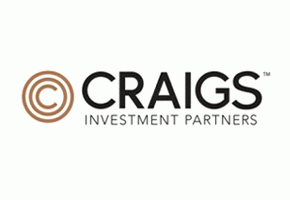
The latest data released for KiwiSaver performance as at September 30, 2012 is from Craigs Investment Partners (Craigs IP).
Craigs IP are one of the few share brokers to venture into the KiwiSaver arena. There are two avenues members can go down to select their KiwiSaver fund.
Firstly, KiwiStart Select allows members to choose one of three options -
1) Self selected portfolio where you build your own portfolio from a list of 100 securities;
2) Defined portfolio which is a series of 8 model portfolios based on your risk profile; and
3) a mix of the Self select or Defined portfolio options.
Members also have the choice of using the eight model strategies under the Defined Portfolio option to create their own strategy based on their risk profile.
Each of the model portfolios is designed to deliver investors with superior risk-adjusted returns. Removing the jargon, the fund manager has designed a model strategy they believe will generate a level of return greater than the estimated risk involved.
Disclosure and transparency of where money is invested is a big plus for these schemes. For example, the Fixed Interest Fund portfolio shows a breakdown between Government, Local Authority, Corporates, Banks and Cash, provides details on fund size, composition of the return (income versus growth), the investment ranges, the underlying benchmark and probably more importantly the underlying securities and maturity profile.
The NZ Equity portfolio has only managed to match the performance of the benchmark (95% NZX50 Gross Index & 5% NZX 90-day Bank Bills) over the last 12 months. Admittedly the return on the portfolio is after fees and before tax and the benchmark is not adjusted for either, but nonetheless the portfolio has not achieved its core objectives of delivering a superior return for less risk. We expect a NZ based broker with full research capabilities should be able to out-perform the NZ sharemarket on an after fees (and after tax) basis.
Most of the funds offered under the Defined Portfolio series have underperformed their nominated benchmarks for the last year on an after fees basis (before tax) which illustrates how hard it is to morph from being a sharebroker to a wealth manager.
The Conservative, Balanced and Growth Funds are the only ones in the suite of funds which have been going for five years. The Balanced and Growth Funds have both delivered returns greater than their benchmark and with less volatility (risk). The Conservative Fund return is in line with the benchmark and has achieved this return with considerably less risk.
In comparing the performance of these three funds against others in their peer group, the Conservative Fund perfomance is near the bottom, the Balanced Fund would rank inside the top 10 and the Growth Fund would be close to the top of its group.
Below is a table of the longer term performance of the Craigs IP funds. The return data is before tax and after fees and is as published by the managers. (No adjustments have been made to take into account those additional fees which scheme providers may charge and which are not included in calculating the fund performance. We do make such adjustments, but they will not be included until the full benchmarking is published.)
|
Craigs IP KiwiSaver Scheme |
1 year (p.a.) |
5 year* (p.a.) |
Since inception (1 Oct 2007) (p.a.) |
| Conservative Fund | 6.1% | 4.5% | 4.6% |
| Balanced Fund | 8.9% | 3.4% | 3.4% |
| Growth Fund | 9.6% | 3.1% | 3.2% |
| Balanced SRI Fund | 9.8% | n/a | 3.6% |
| Equity Fund | 11.2% | n/a | 4.1% |
| Fixed Interest Fund | 5.2% | n/a | 6.2% |
| NZ Equity Fund | 14.1% | n/a | 10.4% |
| Australian Equity Fund | 14.7% | n/a | 4.2% |
* 5 year returns are not detailed so these have been calculated using unit pricing sourced from the various fund factsheets.
More detailed performance reporting can be found here ».
We welcome your comments below. If you are not already registered, please register to comment.
Remember we welcome robust, respectful and insightful debate. We don't welcome abusive or defamatory comments and will de-register those repeatedly making such comments. Our current comment policy is here.